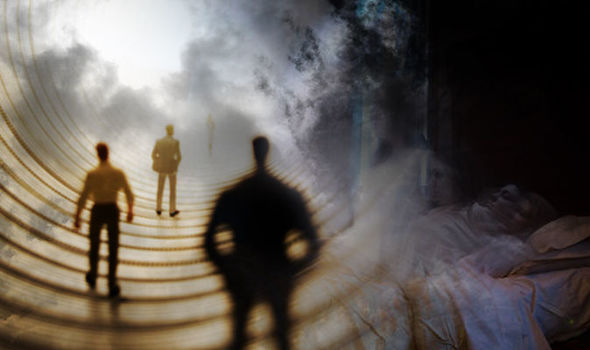Patient One, a 24-year-old woman pregnant with her third child, faced a dire medical crisis in 2014 due to a pre-existing disorder causing irregular heartbeats. This disorder had plagued her during her previous pregnancies, leading to seizures and fainting spells. Tragically, four weeks into her third pregnancy, she collapsed at home, unconscious for over 10 minutes before paramedics arrived.
Despite efforts to revive her, her heart had stopped, leading to a harrowing journey through the medical system. Initially, she was taken to a hospital ill-equipped to treat her, eventually landing in the emergency department at the University of Michigan. There, medical staff fought valiantly to restart her heart, resorting to multiple shocks from a defibrillator. Despite their efforts, she remained unresponsive and was transferred to the neurointensive care unit, her brain swelling ominously. After days in a deep coma, her family made the heartbreaking decision to remove life support, marking the beginning of her journey as a significant scientific subject.
For years, Dr. Jimo Borjigin, a neurology professor at the University of Michigan, grappled with the enigma of death. She delved into the phenomenon of near-death experiences, fascinated by the reports of individuals undergoing profound psychic journeys during cardiac arrest. While sceptical of the metaphysical interpretations, Borjigin suspected these experiences were rooted in real neurological processes. Her research on rats revealed a surge of neurotransmitters during oxygen deprivation, prompting her to wonder if similar events occurred in humans, even those who couldn’t be revived.

Despite the pervasiveness of near-death experiences, scientific understanding of death remained stagnant. Despite advances in resuscitation since the 1960s, including the revival of countless individuals with near-death experiences, ambiguity still shrouded the ultimate fate of the dying brain. Borjigin’s meticulous examination of Patient One’s brain activity post-life support removal marked a pivotal moment, offering unexpected insights with the potential to redefine our comprehension of death.
“I believe what we found is only the tip of a vast iceberg,” Borjigin asserted, highlighting the inexplicable phenomena occurring within the dying brain.
The history of near-death studies dates back to the late 19th century when Swiss climber Albert Heim documented climbers’ accounts of near-fatal falls. These narratives, featuring vivid recollections and ethereal experiences, laid the foundation for further exploration. Raymond Moody’s influential book, “Life After Life,” distilled numerous near-death reports, spawning a field rife with divergent interpretations.
The field splintered into various factions, from spiritualists advocating for a divine afterlife to parapsychologists arguing for consciousness beyond the brain. Physicalists like Borjigin focused on the biological underpinnings, viewing near-death experiences as hallucinatory manifestations of brain activity.

Amidst debates, the core question persisted: what happens when we die? Borjigin’s pursuit of this “holy grail” of neuroscience faced hurdles, including scepticism from funding agencies reluctant to delve into the paranormal. However, emerging evidence suggests that death’s boundaries may be more fluid than previously believed, hinting at the potential for reversing even total brain death.
“The brain is so resilient, the heart is so resilient, that it takes years of abuse to kill them,” Borjigin observed, challenging conventional notions of irreversible death. Despite the reluctance to fund research into consciousness and death, Borjigin remains hopeful that understanding the neurophysiology of death could one day lead to its reversal.
In 2019, groundbreaking research at Yale University hinted at this possibility, demonstrating metabolic activity in pig brains hours after decapitation. While far from sentient consciousness, this discovery hints at the tantalizing prospect of extending life’s frontiers into the realms of death.
In a documentary series titled “Surviving Death,” near-death studies luminaries, like Dr. Bruce Greyson, highlighted the paradoxical nature of consciousness during cardiac arrest. Greyson pointed out the incongruity between flatlining brain activity and reported near-death experiences, challenging conventional notions of brain-dependent consciousness. This pivotal observation fueled ongoing debates within the near-death research community regarding the nature of consciousness and its potential existence beyond the confines of the brain.

The quest to unravel the mysteries of death encompasses a broad spectrum of perspectives, from spiritual interpretations to scientific inquiry. Borjigin’s relentless pursuit of understanding the dying brain represents a critical frontier in neuroscience, seeking to demystify the enigmatic transition from life to death.
As the scientific community grapples with the complexities of near-death experiences and the fundamental nature of consciousness, Borjigin’s groundbreaking research offers a glimmer of hope. Despite the reluctance of funding agencies and the stigma surrounding paranormal research, Borjigin remains undeterred in her quest to shed light on the intricate workings of the dying brain.
With each discovery, the boundaries of life and death blur, challenging our perceptions and pushing the frontiers of scientific understanding. Borjigin’s vision of unlocking the secrets of the dying brain holds the promise of revolutionizing our comprehension of death and potentially paving the way for unprecedented medical interventions.
As humanity continues to confront the ultimate existential question of what lies beyond death, Borjigin’s research stands as a beacon of hope, illuminating the path toward unlocking the profound mysteries of human consciousness and the enigma of death itself.







